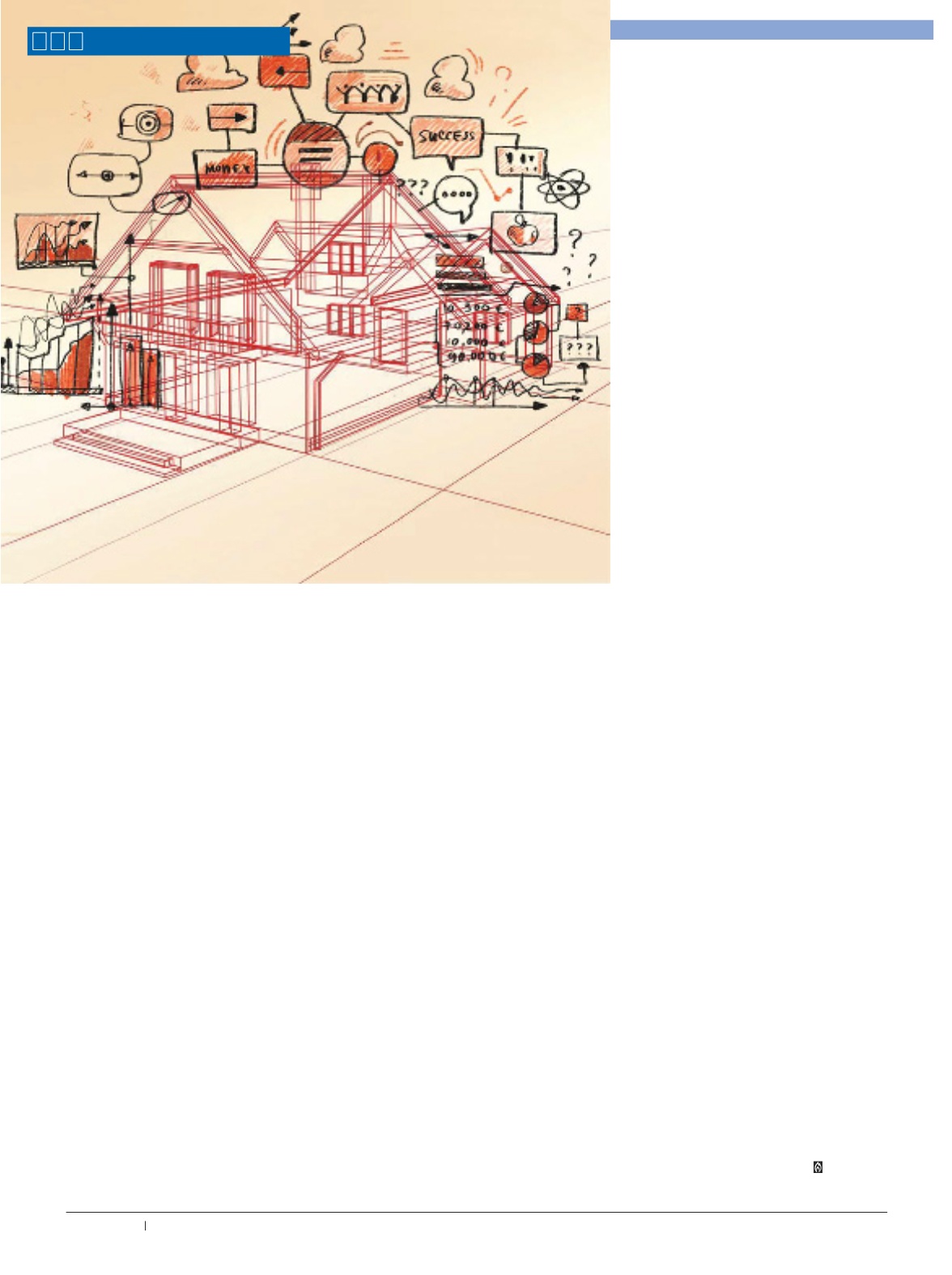
ÎÓÊU "
&
ENERGY
`ÀÊ ÀÊ+Õ>ÌÞ
?FD< :FD=FIK :FEKI8:KFIJ N?F N8EK
to succeed at selling indoor air quality
(IAQ) services need to have a business plan
that enables them to diagnose air quality
problems and install solutions that address
the problems they diagnose.
That’s the advice of Bill Spohn, General
Manager and Co-Owner of TruTech Tools.
He recently ran a webinar for contractors enti-
tled
What Can I Do With IAQ?
In introducing
the topic, he noted that many of today’s
homes are tightened up against air infiltration
in order to reduce energy bills. “What do you
do when you get the house tight?” he asked.
“You celebrate and introduce proper ventila-
tion from a proper source.”
The air inside a home starts fresh when
it comes from the outside, but with too
low a rate of air exchange, it accumulates
airborne contaminants such as carbon
monoxide, radon, smoke and odors from
cooking, and chemicals that “out-gas” from
building materials and furniture.
GFK<EK@8C GIF9C<DJ
One of the challenges for the con-
tractor is defining what good air quality
is, according to Spohn. He said there are
four “P”s of indoor air quality. The first is
particulates, which are the tiny particles that
accumulate in the air. Contractors need to
learn what they are, where they come from,
and how to detect and measure them
The second “P” is for pathways, which
refers to the route that airborne pollutants
take as they pass through the building.
Oftentimes when sealing and insulation
have been done as retrofits, the airways
inside a home or building are altered,
which can change the intensity of an air
quality problem.
The third “P” is for people, because the
contractor needs to understand how people
are using a space and whether they are
doing things that might be causing the air
quality problems. To illustrate how easily
people can create an air quality problem,
Spohn showed a picture of a storage nook
under a staircase in a home, which the
homeowners used as a storage space for
cans of paints and solvents. What they did
not know was that return air to the furnace
passed through a register in the same space,
which caused chemical fumes to spread
throughout the home.
The fourth “P” is pressure, which is a
factor in many indoor environments due
to air movement equipment, such as stove
hoods, bathroom fans and clothes dryers.
E8IIFN K?< =F:LJ
Spohn said it is difficult for a contractor
to provide complete analysis of IAQ,
because there is such a large range of poten-
tial contaminants, including combustion
gases, mold spores, asbestos and gases from
building materials. “It is hard to get your
hands around it,” he added.
To connect with customers on IAQ,
he recommends that contractors talk with
them and ask what bothers them about
their homes. Discussions such as these can
get homeowners thinking about the house
as a system, he said.
Spohn recommends that contractors
think in terms of what they can accomplish
and what they can sell. “As an analyst, what
can you affordably measure? And what can
technicians affordably install or change to
fix the issues you find?” he said. “It’s not
a business model unless you have someone
paying for the services. Start thinking in a
business sense. You can’t just go to a full-
bore indoor hygiene audit.”
To sell successfully, a contractor should
focus on three or four core parameters, such
as temperature, humidity, fresh air and
carbon monoxide. A measurement of CO2
can serve as a “surrogate” for determining
the freshness of the air, because elevated
CO2 levels can indicate the air is stale, he
said. CO2 measurement devices range in
price from $400 to $3,000, according to
Spohn. Contractors who have a blower
door can also use that to test for the number
of air exchanges per hour.
K?@EB 8?<8;
He suggested that contractors think
ahead and ask themselves what they are
likely to find in a home. They should also
think of factors that could affect readings.
If a house has been aired out before the
contractor arrives, for example, reading for
contaminants like carbon dioxide will be
lower than at other times.
Using a tool like a Testo humidity stick,
the contractor can find the home’s relative
humidity and dew point. Customers are
learning the concept of a “feels like”
temperature because it is used in weather
reporting, and the same phenomenon
exists indoors, because the humidity level
changes the perceived temperature level.
Focusing on the indoor humidity can sup-
port the sale of products for humidification
and dehumidification as well as products
that control air infiltration, such as a heat
recovery ventilator or an energy recovery
ventilator.
Contractors can also measure for
airborne particulates using a meter that is
typically priced between $1,800 and $3,000.
A meter can identify the size and quantity
of the particulates. Typical solutions for
excessive particulate counts are electronic
media filters and HEPA filters.
K
f J\cc
@8H <]]\Zk`
m\cp#
D
Xb\ X 9lj`e\j
j Gc
X
e


